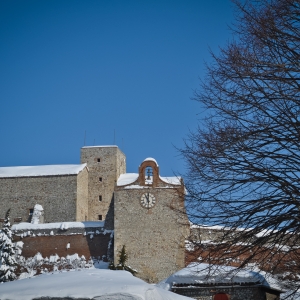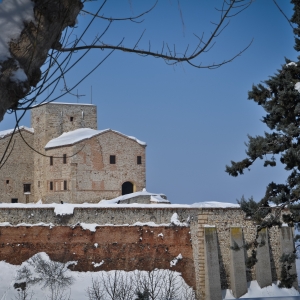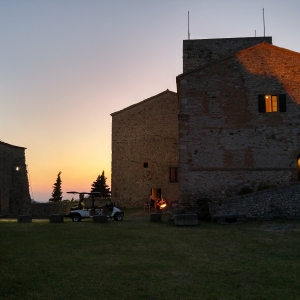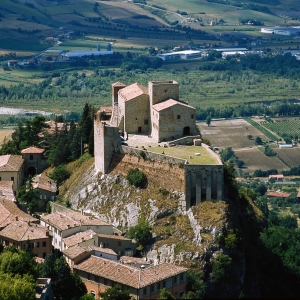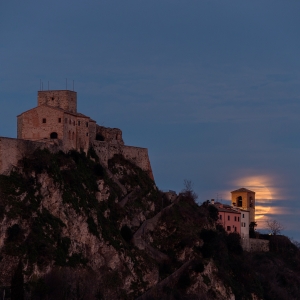Open today
Malatesta Rocca
This is one of the largest and best preserved Malatesta fortifications: the Malatesta Rocca of Verucchio, built by Sigismondo Malatesta in 1449; it offers a panorama that ranges from the Adriatic to the highest peaks of the Apennine ridge.
Inside, it preserves the impressive Malatesta family tree, the two courtyards, the halls of the Baronial Palace and the Mastio Tower from which you can admire the stupendous landscape of Valmarecchia.
The Fortress is easily recognizable by the characteristic watch tower where a large clock is set that marks the hours on the central Piazza Malatesta. Going along the cobbled Via della Rocca, you reach the gate that gives access to the town enclosed within the first ring of walls. After proceeding a few hundred meters uphill, you arrive at the foot of the Castle itself. A little further on, you enter the vertical garden.
The Castle has witnessed the overlapping of various architectural styles from the 12th to the 16th century. The fortress was in fact already owned by the Malatestas in 1197: The family held the town and the castle for at least three centuries. Inside the Rocca, in the Sala Magna, where a theater was located until 1700, you can now see an exhibition that illustrates the evolution of heraldic coats of arms throughout history.
The hamlet of Verucchio, located at the center of the important strategic system via which the Malatestas controlled the territory, was the birthplace of "il Mastin Vecchio" (the Old Mastiff) Malatesta of Verucchio, the progenitor known as "the centenary" who conquered Rimini in 1295, remembered by Dante in the Divine Comedy: "the old and new mastiff from Verrucchio, / who were bad jailors for Montagna, / there where they used to sharpen their teeth".
Verucchio was, in fact, a strategic garrison and fortress against the adverse rule of the Montefeltros.
It was the last great figure of the Malatestas, Sigismondo Pandolfo himself, who remodeled the Fortress and the ring of walls around the hamlet during the fifteenth century AD.
Through the centuries, the rooms of this fortress have undergone numerous transformations to adapt to the needs of successive courts, for example the court of Zenobio dei Medici, Ippolita Comnena, Leonello and Alberto Pio from Carpi.
La Rocca is venue for conferences, cultural events, shows and exhibitions.


